05.02.04 Mt. 4:1-11; Mk. 1:13b; (See also Mk. 1:12-13; Lk. 4:1-13) Wilderness Mountain
THE DEVIL TEMPTS JESUS
1 Then Jesus was led up by the Spirit into the wilderness to be tempted by the Devil. 2 After He had fasted 40 days and 40 nights, He was hungry. 3 Then the tempter approached Him and said, “If You are the Son of God, tell these stones to become bread.” 4 But He answered, “It is written: Man must not live on bread alone but on every word that comes from the mouth of God.” (Deut. 8:3)
5 Then the Devil took Him to the holy city, had Him stand on the pinnacle of the temple, 6 and said to Him, “If You are the Son of God, throw Yourself down. For it is written: He will give His angels orders concerning you, and they will support you with their hands so that you will not strike your foot against a stone.” (Ps. 91:11-12; LXX)
7 Jesus told him, “It is also written: Do not test the Lord your God.” (Deut. 6:16)
8 Again, the Devil took Him to a very high mountain and showed Him all the kingdoms of the world and their splendor. 9 And he said to Him, “I will give You all these things if You will fall down and worship me.”
10 Then Jesus told him, “Go away, Satan! For it is written: Worship the Lord your God, and serve only Him.” (Deut. 6:13)
11 Then the Devil left Him, and
Mk.13b He was with the wild animals, and the angels began to serve Him.
The temptations offered by Satan have three interesting reflections on the Roman Empire. Hellenized Jews, tax collectors like Matthew and Zachaeus, and many others were lured in by the Roman promise of the life of wealth and materialism. Caesar Augustus and the emperors who followed him gave the Roman citizens the same three temptations as Satan offered to Jesus.
- Satan told Jesus to turn stones into bread (Mt. 4:3); the Romans offered bread and circuses (entertainment) for the masses.
- Satan told Jesus angels would protect Him if He jumped off the temple pinnacle (Mt. 4:5-6); the Romans offered protection to the citizens by crushing any rival enemy.
- Satan offered Jesus all splendors of the nations of the world (Mt. 4:8); the Romans offered prosperity and Roman peace (Latin: Pax Romana meaning peace to Roman and quiet in the provinces).[1]
The term “wilderness”means a desert wilderness without inhabitants. The Judean wilderness was a rocky and hilly land, with mountains close to the Jordan River and Dead Sea. The ancients believed angels were needed for protection from natural desert elements and the wild animals that roamed there (Ps. 91:11-13).[2] THe Dead Sea Scrolls and extra-biblical writings attest to the common belief that the wilderness was a cursed land full of wild animals and demons,[3] but God will restore the land at a future time.[4] So to the first century Jews, when Jesus went into the desert wilderness, He was walking into the proverbial “hell on earth” to meet the devil on His own turf.
“To be tempted by the devil.” The phrase “devil” is translated from the Greek word diabolos (1228) and its Hebrew counterpart is Satan, meaning adversary, opponent, rebel or a slanderer.[5] At times it was applied to evil men.[6] While Satan is the evil one who brings evil temptations that cause men to sin, God will test someone in certain situations to challenge his character and faithfulness.[7] Jesus was led by the Spirit to confront Satan, and the evil one responded aggressively in his attempt to test Jesus. However, it must be recognized that the reason Jesus was led by the Spirit, was because He, Jesus, was the aggressor and Satan, eventually became the victim.
There is a need to further discuss the Greek word for tempt which is peirazein.[8] The translation difficulty is that in English the word tempt always has a negative connotation to it. However, it would be better translated as tested, as to prove one’s worth, faithfulness, or fidelity.[9] Jesus was tested to prove His worth or fidelity. Jesus was being tempted by Satan; any obedience to Satan is sin.

“If you are the Son of God.” This phrase would be better translated “because you are the Son of God” [10] or “since you are the Son of God,” as the indicative mood in Greek means that the question assumes Jesus was the Son of God.[11] It is interesting that Satan did not question the deity of Jesus. Rather, he asked Jesus to tell the stones to become bread, something only God could do.[12] Stones are found in abundance nearly everywhere and changing them into bread would meet the needs of the people for centuries to come. Bread was the staple of the ancient diet; the basic food for survival, so much so that bread became a synonym for food.[13] But Jesus never affirmed a request presented by the evil one. Notice that Jesus never argued or debated with Satan, He simply said “It is written …” with an obvious reference to the power of the Old Testament and the will and command of God, the Father (see phrase explanation below).
The phrase, “if you are the son of God,” also demonstrated a special relationship to God, as well as a Messianic significance (Ps. 2:7). This relationship had existed eternally. It was even more astounding when Matthew wrote this gospel to the Jews and told them that Satan recognized that Jesus was the Son of God and did not question it.[14] In this encounter the identity and power of Jesus was firmly established.
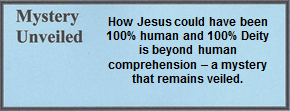
“Tell these stones to become bread.” Jesus, who was very hungry, could easily have given in to the cravings of His human desires and needs (lust of the flesh) and have performed a miracle. But to obey Satan, even for a good reason, is a sin. Jesus chose not to use His Sonship for His own advantage and continued to have faith that God would provide for His needs. He recognized that the highest good for God was not to satisfy His physical urges and needs, but to obey the will of the Father. It should be noted that Jesus truly was tempted to turn stones into bread because,
- He had strong physical hunger and
- He had the power to provide food for Himself.
The pangs of hunger are more powerful when stimulated by temptations and imaginations. Jesus was not only faced with physical and spiritual challenges, but also the calling to be the sacrifice for the sins of humanity. To be starving in the desert for more than a month is bad enough; to resist the onslaught of temptation causes a horrific situation to go beyond human comprehension. The significance is constantly understated because, for mortals, it is impossible to fully understand the agonies Jesus experienced in those forty days in the desert or for an evening in Gethsemane.
“It is written.” The term in Greek is gegraptai, and the perfect passive of grapho, that means “to write.” The perfect tense expresses a completed action and the permanent result from it. More specifically, Jesus said this in the perfect tense, meaning it has been written or it stands written.[15] Therefore, “It is written” can be translated in more detail as meaning, It is written and still stands. This obviously affirms the strong and unchangeable nature of God’s Word, and that the Old Testament was not eliminated by the work of Jesus, but it was fulfilled.
When Jesus was confronted by Satan, His weapon was the written Word (Old Testament), not the Oral Law. This quotation is from Deuteronomy 8:3, which summarizes the main ideas of the Deuteronomic teaching. The chapter has three key words: life, commandments, and sustenance. The rabbis taught that life was based on keeping all 613 Mosaic Laws.[16] In doing so, one served our Lord and, consequently, enjoyed prosperity. It was believed that the study of the Torah was the essence of life and brought one into harmony with God. However, Jesus introduced a new concept at this point, that if one was firm in his faith in God and the Torah, he could meet the challenge of Satan and win. The temptations should be understood as an opportunity to attack Satan, not as a struggle or challenge caused by Jesus. Satan thought he could tempt Jesus to sin as he did Adam, but Jesus turned the challenge around and Satan lost the contest. Throughout His ministry, Jesus always based His arguments upon the Scriptures of the Hebrew Bible. What is significant is that Jesus conquered and rejected the temptation by expressing absolute trust in God, as written in the Old Testament. That lesson is all the more dynamic today in that He has risen from the grave and is seated at the right hand of God.

“On the pinnacle of the temple.” The term temple referrs to the sacred complex with its porticos, courts, sacred holy of holies, and various subordinate buildings. But it can also mean primarily the most holy sacred buiding itself. The pinnacle was the highest part of the temple, an estimated 216 feet above the rocky pavement below. There is an interesting comment recorded in the Midrash that reflects a first century messianic belief and, therefore, sheds light as to why Jesus was at the top of the temple for this temptation. Note the following:
Our teachers taught, at the time when the King Messiah will appear, he will come and stand on the roof of the temple. He will proclaim to Israel and will say to the humble, “The time of your redemption has arrived! If you do not believe – behold my light which shines upon you…”
Midrash, Pesikta Rabbati 36[17]
The teachers (rabbis) taught that the messiah would declare himself as such on the temple. Satan most certainly knew of it and was delighted to tempt Jesus at this point. But the evil one must have been disappointed when Jesus did not accept the invitation. That leaves a question to ponder: Shouldn’t the Jews have considered the possibility that maybe they missed the Messiah after the temple was destroyed?
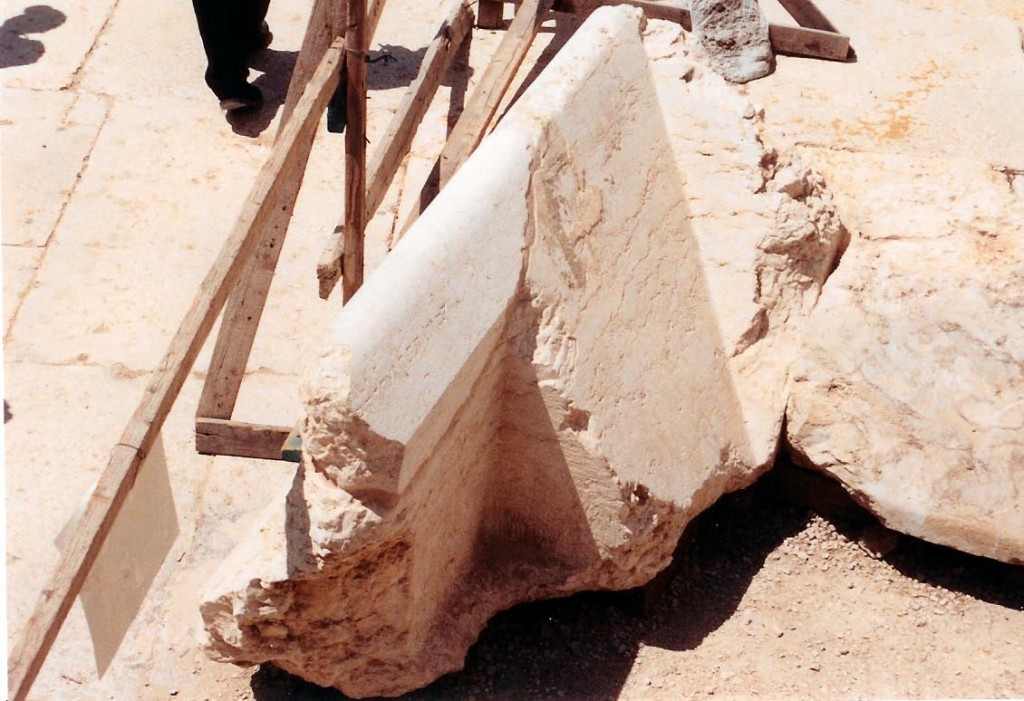
05.02.04.A. THE INSCRIBED PINNACLE STONE OF THE TEMPLE. Archaeologists working at the southwest corner of the Temple Mount discovered an inscribed stone that identified the pinnacle of the temple. The inscription reads, leveit hateki’ah or the place of trumpeting.[18] It was here that the trumpeter announced the opening of the city gates and the beginning of the Sabbath by the blowing of the ram’s horn trumpet.[19] It was probably beside this stone, high upon the temple, where Jesus was tempted. Decades later it was from this same pinnacle that James, the brother of John (Acts 12:2), was thrown to his death by angry priests and Pharisees.[20] Photograph by the author.
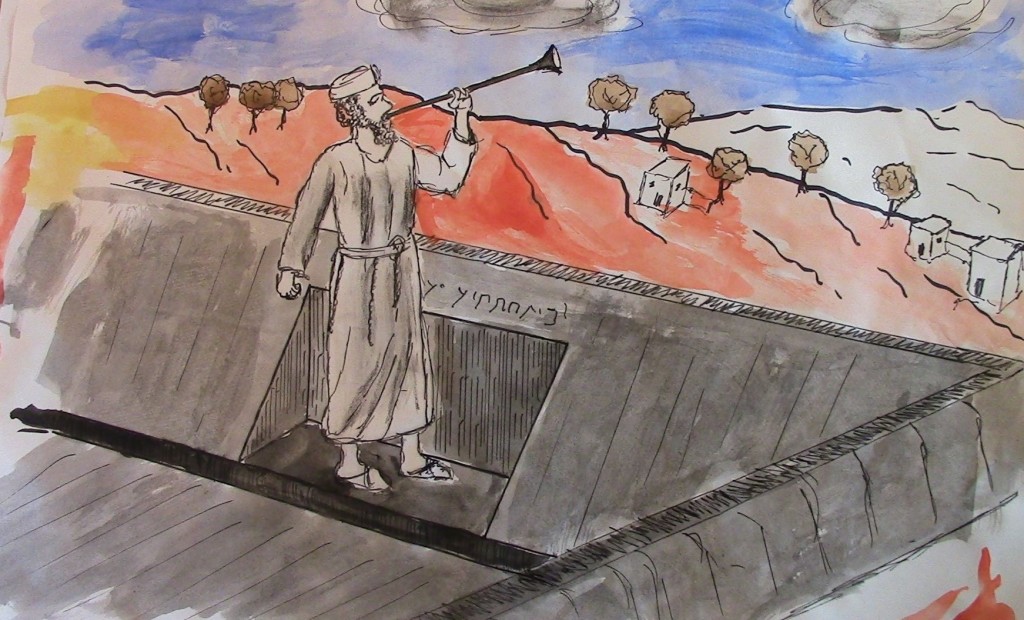
05.02.04.B. AN ILLUSTRATION OF A PRIEST WITH A TRUMPET UPON THE PINNACLE. This illustration is of a priest blowing his trumpet for daily prayers from the highest pinnacle of the temple. It was also from this point that the trumpets were blown every three hours during the night – including the 3:00 a.m. trumpeting known as “the cock’s crow.”[21] Illustration by the author.
“Throw yourself down.” This temptation was a manipulative bribe wherein the evil one quoted Psalm 91:11-12, which essentially states that if the Messiah would fall, the angels would catch Him. Satan attempted to challenge Jesus and to force God to rescue him.
“All the kingdoms of the world.” The Roman Empire encompassed many smaller empires. Its vast region spanned from the mouth of the Rhine River in modern Germany to southern Egypt and it belted the Mediterranean Sea. Historians have often said that the Mediterranean Sea was, in the truest sense, a Roman lake. The throne of Caesar Augustus was seen like an “exceedingly high mountain” and the Roman Empire like “all the kingdoms of the world.” Tradition says that mountain was Mount Quarantania near Jericho. If so, what Jesus saw in the distance was the oasis city of Jericho and the surrounding farmland in the midst of a desert wilderness. What a difference this was compared to the beautiful Galilee area where He grew up and spent most of His time in ministry.
“I will give You all these things.” Satan made a legitimate offer to Jesus when he offered Him the kingdoms of this world, and Jesus did not deny that. At one time Adam had complete reign over the earth, but when he sinned, that authority to reign was taken from him and transferred to Satan. Since then the kingdoms of the earth have been established by force and maintained by power and deceit. These are his own degraded forms of Paradise, and Satan offered these to Jesus.
But Jesus did not wish to be the conqueror of God’s people or dominate them by deceit. God offered kingship to Jesus via the cross, which is in stark contrast to Satan who claims that he can offer “eternal life” without the cross. But Satan’s eternal life is eternal death in flames. The kingship of Jesus begins with the Kingdom of Heaven in His believers. Any day when a soul has repented and turned to righteousness, the eternal Kingdom of Heaven has been enlarged because it has acquired a new citizen.
Beginning with this narrative, Matthew presents a number of ironies throughout his gospel; ironies that reflect the sacrifice of Jesus for our blessings that are recorded in poetic form:
He was hungry (4:2)
but He fed others (14:13-21; 15:29-39)
He grew extremely tired (8:24)
but He gave others rest (11:28)
He was the Messiah king
but He paid taxes (17:24-27)
He was accused of being the devil
but He cast demons out of others (12:22-32)
He died a sinner’s death
that sinners might live (1:21)
He was sold for the price of one slave
but gave His life as a ransom for many (20:28)
He did not turn stones into bread for Himself (4:3-4)
but He is the bread of life for the world (26:26)
Satan would eventually see Jesus perform many miracles and convince thousands of His Deity, such as the time when He would multiply great quantities of bread for thousands, so the bread would be as common as the stones (Mt. 14:18-21). He would preach of a Kingdom of God that is more glorious than any earthly kingdom. He would not jump off a building, but simply walk across the water. Furthermore, casting evil spirits out of people was one of the most dramatic miracles of His ministry – much to Satan’s disappointment. While the evil one thought these temptations would be the end of Jesus, instead these events turned out to be points of victory for Jesus and all those who would eventually place their faith in Him.
“Worship the Lord your God, and serve him only.” This phrase is the first of the Ten Commandments, all ten of which were eventually confirmed by Jesus.[22]
“He was with wild animals.” The environment of nature is often forgotten in biblical studies. Many wild animals roamed freely throughout the land. It would not have been unusual for travelers to see a Syrian brown bear, a lion, or other animals that could threaten the life of a sole traveler. Furthermore, the Jordan River was known to have crocodiles.[23] Small children who strayed from their village or traveling caravan were just as vulnerable as sheep and goats, as history records that at one time two small children were devoured by ravenous wolves in a village beyond the Jordan. Communities then proclaimed a fast for mourning and divine protection.[24]
People from the communities throughout Israel came to Jerualem in festival caravans. They traveled together in groups not only for protection from bandits, but also for protection from wild predators. The Mishnah recorded that:
The wolf, the lion, the leopard, the panther, and the serpent rank as an attested danger.
Mishnah, Baba Kamma 1.4
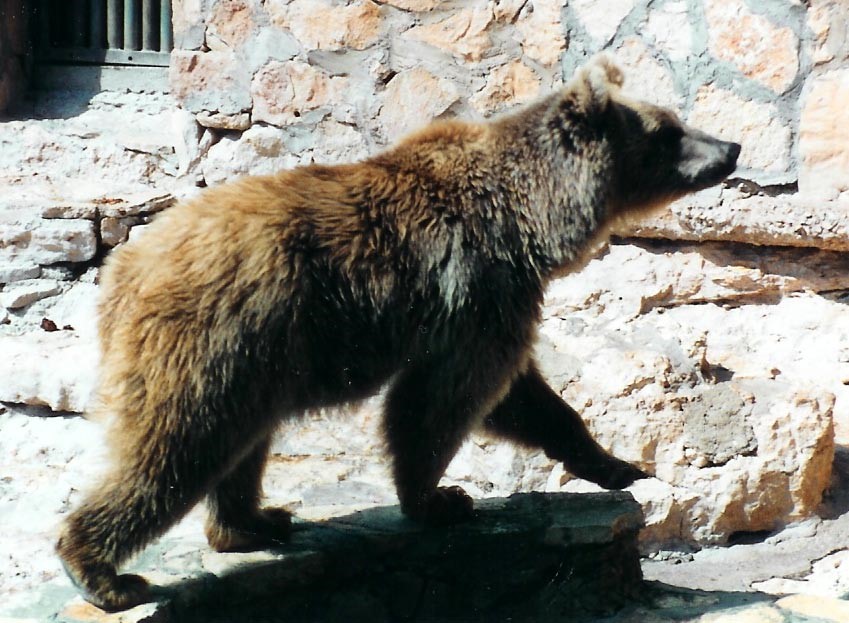
05.02.04.D. THE SYRIAN BROWN BEAR. The Syrian brown bear was one of several vicious animals that Jesus could have encountered in the wilderness. Wild animals were a constant threat to travelers and shepherds with sheep. Therefore, shepherds, travelers, and even the disciples carried swords. Photograph by the author at the Haifa Zoological Garden.
“The angels began to serve Him.” Unless one experiences an hour or two in the desert wilderness of Israel, he has no concept of the potential torture that the natural elements and desert sun can have on a person. Add to that situation the fact that Jesus fasted without food for forty days, and the confrontations with the devil. He was completely famished and exhausted – which is why angels were needed to serve Him. BUT, He was victorious!

Satan failed three times, but that did not deter him. Satan later tempted Jesus numerous times, especially at the Garden of Gethsemane prior to His crucifixion. Satan repeatedly influenced the disciples, such as when Jesus responded to Peter by saying, “Get thee behind me” (KJV). The Apostle Paul told the early church in Ephesus to put on the armor of God to fight Satan and his demons (Eph. 6:10ff.). Likewise the fight continues for believers today.

05.02.04.E. THE CARACAL LYNX. This lynx was among the predators that threatened livestock and people throughout the centuries. Photograph by the author at the Haifa Zoological Garden.
Finally, Matthew connected Jesus with the mighty men of old, Moses[25] and Elijah (1 Kg. 19:8) who were tempted prior to their divine assignment. He does not attempt to explain the evil or temptation; he makes no mention of Satan in history[26] nor does he distinguish between God’s testing and Satan’s tempting. He gives opportunity for future generations to struggle with those answers. He does, however, say that Jesus “wrestled” with Satan and won!
05.02.04.Q1 In Matthew 4:6 and Luke 4: 10, did Satan speak the truth?
Satan gave the appearance of quoting Scripture. But a careful reading, however, reveals that he misquoted it. For example, in Matthew 4:6, Satan incorrectly quoted Psalm 91:11-12 when he failed to mention the phrase “to guard you in all your ways” in verse 11. Satan cannot communicate divine truth, but he does very well with half-truths, misapplied truths, or revengeful truths for the purpose of deception, hurting people, and furthering his evil kingdom.
05.02.04.Q2 Was Jesus capable of committing a sin?
Absolutely! Otherwise, He would have been immune to temptations. The two most grievous struggles He experienced were at the beginning and the end of His ministry: Forty days in the desert wilderness and one night in the Garden of Gethsemane followed by six trials and the crucifixion. The miracle of Jesus is that He was tempted in every area of life as we are – the lust of the flesh, the lust of the eyes, and the pride of life – yet He remained completely sinless (Heb. 4:15). He was totally God and totally human, a concept that mere mortals find contradictory and impossible to understand. If He had not experienced victory over the temptations of humanity, then He would not have been the promised sinless and spotless Lamb of God.
On a related issue, Satan is the archenemy of God as well as mankind, since mankind was created in the image of God. Therefore, Satan is the archenemy of mankind as well. Since Satan’s principal method of attack is temptation, this makes the temptations of Jesus especially significant.
05.02.04.Q3 Whose account of the temptations is accurate, Luke’s or Matthew’s (Mt. 4:1-11 or Lk. 4:1-13)?
Matthew and Luke recorded the same three temptations, but in a different order. Only Luke said earlier that he wrote his gospel in an orderly (chronological) account (Lk. 1:3). Each writer wrote from his own perspective with an emphasis on whatever he thought was significant. Luke, a physician by trade, wrote in chronological order because that was important to him.[27] On the other hand, Matthew, who was previously gaining personal wealth as a tax collector, emphasized the kingdoms of the world displayed before Jesus as a significant temptation. In first century Judaism, the chronology of events was not as significant as was the meaning of the events that the writer was attempting to convey.
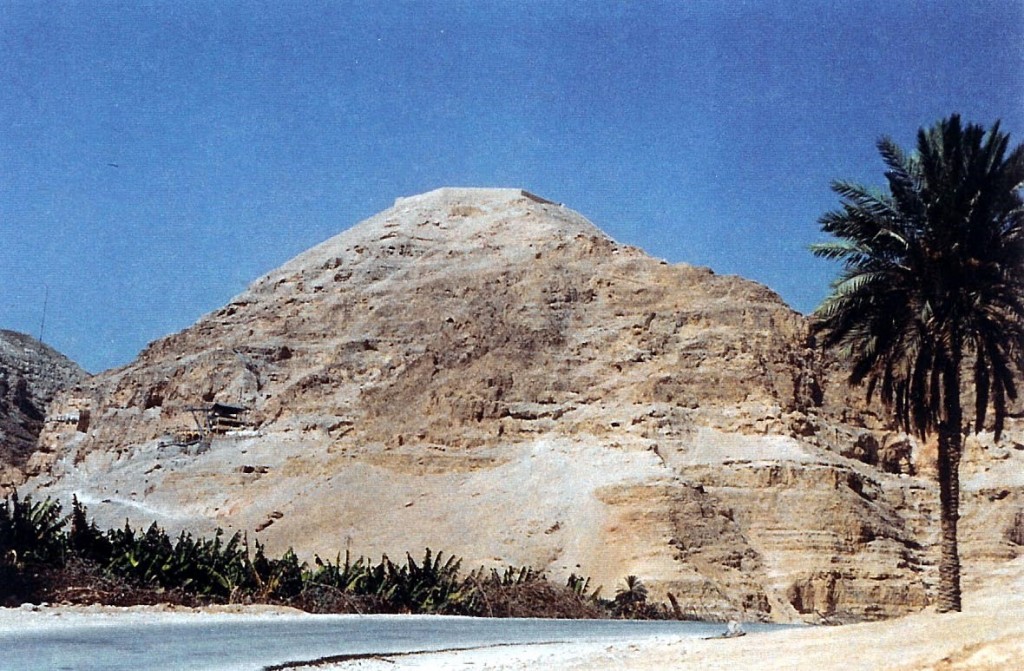
05.02.04.C. THE TRADITIONAL TEMPTATION SITE OF MOUNT QUARANTANIA. This site tradition is believed to have originated with the Crusaders because from this viewpoint one can see great distances. Whatever Jesus was, the desert is known for its unforgiving heat and barrenness. Photograph by the author.
Jesus was not compelled to go into the wilderness, but He was guided by the Holy Spirit.[28] For forty days He prayed and meditated in the desert wilderness. The number forty appears to be associated with temptation and retribution, because for forty days Moses stayed in the Sinai[29] and Elijah stayed in the wilderness for forty days. (Both Moses and Elijah would meet Jesus later on the Mount of Temptation.) Jesus was conscious of new power within His human body as well as an overwhelming sense of being near to God. He not only had to prove Himself to God, but also to Himself and to His people.
The Jewish people believed that a man would not be seen as being great in the eyes of God unless he had first been tested – tested not to sin, but to avoid sin.[30] They reflected upon five great men as examples.[31] Therefore, when Jesus faced several temptations, it was not only the beginning of His leadership, but one that followed a well-established biblical pattern that was well known to the Jews. Note the following:
- Adam was tempted in a beautiful garden;
Jesus was tempted in a desert wilderness.
- Adam enjoyed delicious food;
Jesus hungered during a forty day fast.
- Adam was given the entire world;
Jesus was tempted with the kingdoms of the world.
- Satan appeared as a serpent to Adam,
but as himself to Jesus.
- Adam failed
but Jesus passed the tests (temptations) and was without sin.
Furthermore, there are two interesting comparisons to be considered; comparisons between Jesus and Adam as well as Jesus and Israel.
Jesus and Adam. There are two significant temptation stories in the Bible. The first is the temptation of Adam in the book of Genesis. It was there where God’s first created man who lived in a beautiful garden and was at peace with the animals and world around him. Adam fell to the challenge of Satan, which brought ruin to man and the world.
Jesus, on the other hand, was the “second Adam,” and challenged Satan in the desert where there were wild and destructive beasts, symbolic of the ruin brought on by the sin of Adam. All temptations in the history of humanity relate in some manner to these two accounts. If we are tempted by Satan and decide to accept his temptation, we fail and fall. However, if we resist Satan when tempted, then Satan fails and falls. The first Adam of creation failed, but Jesus, who is the “second Adam,” had victory. Adam fell into sin in the lush green environment of the Garden of Eden. What a contrast to Jesus who had total victory in the harsh desert wilderness after a forty day fast.[32] Adam and Eve failed the same temptation tests in the Garden of Eden. Jesus succeeded where mankind failed.[33]
At times, His baptism and the temptations have been interpreted as two separate events, but these are in fact, fundamentally interwoven. God the Father had just audibly proclaimed His approval of Jesus, after which Jesus faced Satan, His challenger. While in heaven, it was Satan who attempted to place himself in the position of God. Later he motivated Herod the Great to kill the infant Jesus and now he desired to cause Jesus to sin. Had Satan been successful, then the plan of God for man’s salvation would have failed. However, since Jesus successfully passed the test of temptation, His success became Satan’s failure. It should be noted that Jesus resisted temptations throughout His entire life. However, these three temptations were radically different from other ones, because Satan not only attacked Jesus physically when He was at His weakest, but he also attacked Jesus as the Messiah to destroy His messianic calling.
Jesus and Israel. The temptations of Jesus provide clear reflections upon the history of Israel. When the Israelites left Egypt (Ex. 14), they walked across the dry bottom of the Red Sea and, thereby, went from death unto life, the symbolism of baptism experienced by Jesus. Soon, after reaching the other side, they tempted God and were punished. Hence, they spent forty years wandering in the desert, at the end of which Moses fasted for forty days and nights on behalf of his people. Like Israel’s testing of forty years, Jesus went into the wilderness for a time of testing for forty days.[34]
The scenic horizons of the kingdoms of the world which were shown to Jesus, although similar to the scenic beauty God showed Moses on Mount Nebo, were not parallel because Moses was not permitted to enter the Promised Land. The point is that where Israel failed, Jesus accomplished victory!
Finally, the epistle to the Hebrews adds understanding to the temptation experience of Jesus. The writer said that because Jesus suffered when He was tempted and did not sin, He is able to help believers in their temptations (Heb. 2:18). Furthermore, He is now our high priest and advocate before the Father, defending us from the accusations of the devil.
[1]. This phrase is the definition of Pax Romana. Lee, The Galilean Jewishness of Jesus. 72-73; Mellowes and Cran, Executive Producers. From Jesus to Christ: The First Christians. (DVD). Part 1; See “Pax Romana” in Appendix 26.
[2]. The wilderness regions had wild animals such as the wolves, Syrian brown bears (05.02.04.D), and the caracal lynx (05.02.04.E).
[3]. Dead Sea Scrolls – 1 QM 1; Isa. 13:19-22; Ezek. 34:25; Lk. 11:24-28. Demons and wild animals are associated with each other in the Extra-biblical works of the Testament of Issachar 7:7; Testament of Naphtali 8:4; and Testament of Benjamin 5:2.
[4]. Isa. 11:6-9; 32:14-20; 40:3; 65:35; Hos. 2:18.
[5]. Barclay, “Mark.” 22; Vincent, Word Studies in the New Testament. 1:27; Vine, “Devil, Devilish.” Vine’s Complete Expository Dictionary. 2:166.
[6]. Reference to Judas is in John 6:70, other references are in 1 Tim. 3:11 (slanderers) and in 2 Tim. 3:3 and Titus 2:3 (false accusers).
[7]. Ps. 26:2; Jn. 6:6; Heb. 11:17; 2 Cor. 13:5; Rev. 2:2.
[8]. Vincent, Word Studies in the New Testament. 1:43-44.
[9]. Barclay, “Matthew.” 1:62-63.
[10]. Bookman, When God Wore Sandals. CD Trac 4.
[11]. Edersheim, The Life and Times of Jesus the Messiah. 122.
[12]. Willmington, Willmington’s Guide to the Bible. 22.
[13]. Cranefield, “Bread.” 37.
[14]. Lee, The Galilean Jewishness of Jesus. 18.
[15]. Vincent, Word Studies in the New Testament. 1:28
[16]. The 613 laws were observed only during the times of the tabernacle or temple. Today, only 271 of those Mosaic commands can be observed. See Parry, The Complete Idiot’s Guide to the Talmud. 221.
[18]. Bivin and Blizzard, Understanding the Difficult Words. 36.
[19]. Josephus, The Jewish Wars 4.9.12; Bivin and Blizzard, Understanding the Difficult Words. 36.
[20]. Macartney, Great Interviews of Jesus. 10.
[21]. For more information on the “cock’s crow,” see Appendix 16, 26, and 14.02.22.Q1.
[22]. Appendix 4.
[23]. Lightfoot, A Commentary on the New Testament from the Talmud and Hebraica. 1:220-21; Farrar, The Life of Christ 59-60.
[24]. Lightfoot, A Commentary on the New Testament from the Talmud and Hebraica. 2:159.
[25]. Three times Moses fasted for 40 days: Ex. 24:18; 34:28; Deut. 10:10. See also Deut. 9:9.
[26]. See Gen. 22:1 and Jub. 17:16 [cf. Heb. 11:17]; 2 Sam. 24:1; 1 Chron. 21:1; Ex. 4:24 and Jub. 48:2.
[27]. See 02.02.11 and “An orderly sequence” in 04.01.04.
[28]. Vincent, Word Studies in the New Testament. 1:287; Lang, Know the Words of Jesus. 8.
[29]. Three times Moses fasted for 40 days: Exodus 24:18; 34:29; Deuteronomy 10:10, and Exodus 34:28.
[30]. Lang, Know the Words of Jesus. 8.
[31]. Noah, Joseph, Abraham, Moses, and Elijah.
[32]. On an interesting side note, the forty days of Lent observed by many Christians throughout the centuries is a tradition based upon the forty days Jesus spent in the desert wilderness.
[33]. Lang, Know the Words of Jesus. 8-13.
[34]. Lang, Know the Words of Jesus. 9-12.